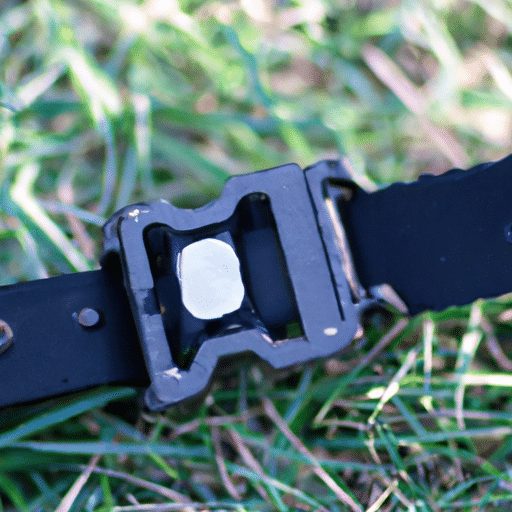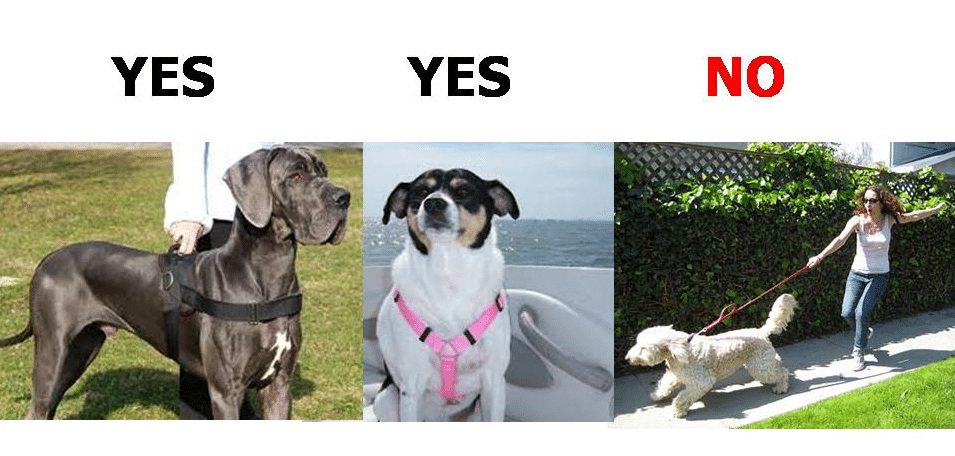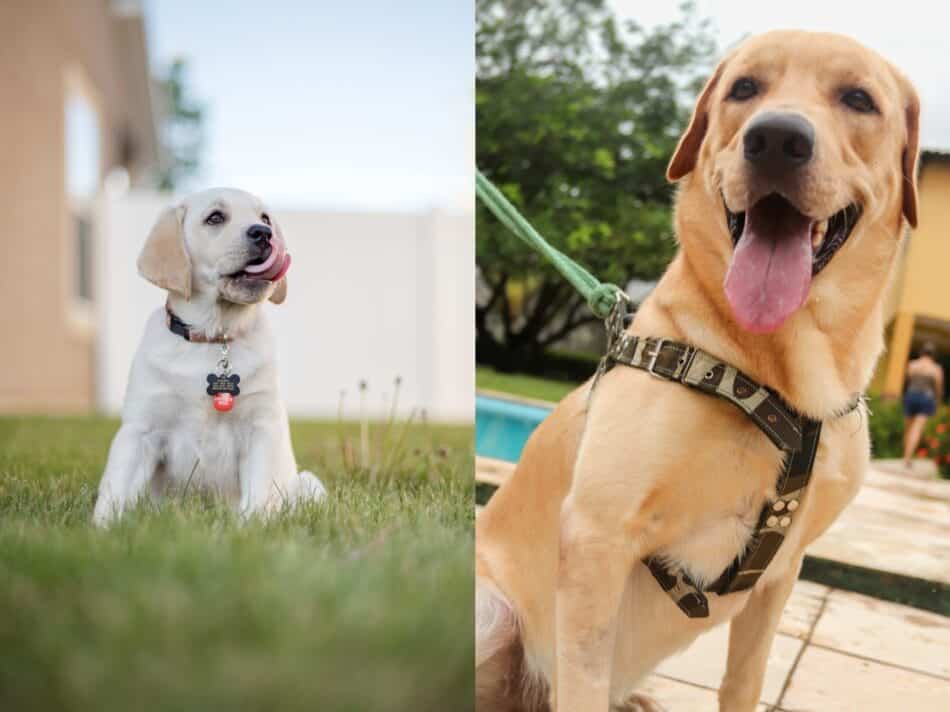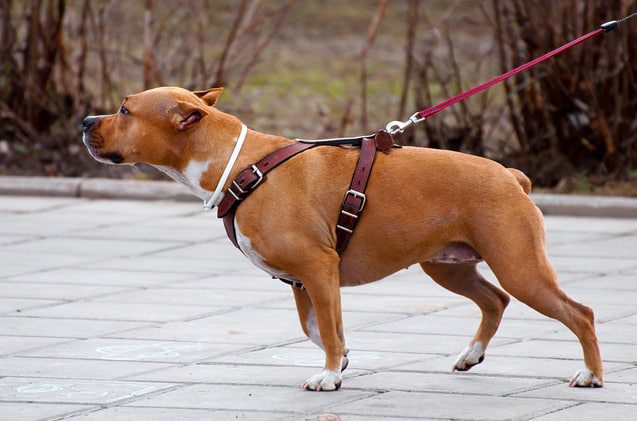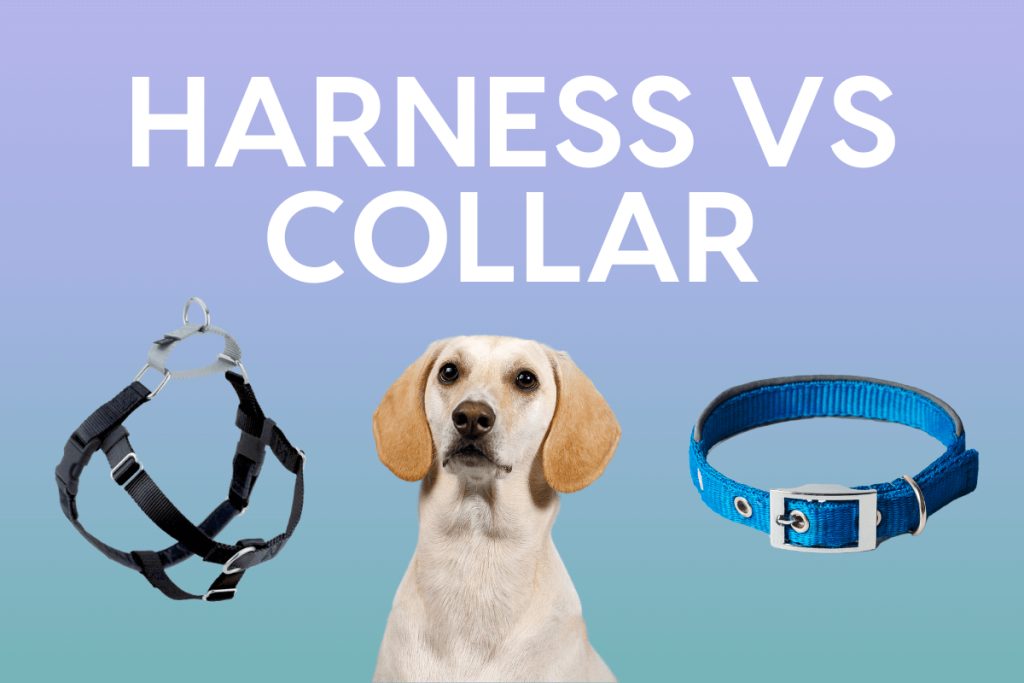Deciding between a harness or a collar for walking your furry companion can be a perplexing choice. While both options have their benefits, it ultimately depends on your dog’s size, behavior, and overall comfort. In this article, we explore the pros and cons of using a harness versus a collar to help you make an informed decision that ensures both your dog’s safety and enjoyment during those daily walks.
This image is property of i.insider.com.
Benefits of Using a Harness
A harness is a valuable tool for walking dogs, providing several benefits to both the pet and the owner. One of the major advantages of using a harness is the increased control and safety it offers. With a harness, we have better handling and can guide our furry friends more effectively. This can be particularly helpful when walking in busy areas or when encountering distractions.
Another significant benefit of using a harness is that it reduces strain on the neck and throat. When a dog pulls on a collar, the pressure is concentrated around the neck area, which can sometimes lead to discomfort or even injury. By distributing the pulling force across the chest and shoulders, a harness helps to alleviate this strain, making walks more comfortable for our beloved pets.
Harnesses also play a crucial role in preventing pulling and lunging behaviors. With a collar, dogs may be more prone to pull and strain against the leash, especially if they are excited or see something of interest. However, a properly fitted harness discourages pulling, as it redirects the force to the body and disrupts the dog’s ability to pull efficiently. This ultimately makes walks more enjoyable for both dogs and their owners.
Additionally, a harness acts as a deterrent for escapism. Some dogs have a natural inclination to wriggle their way out of collars, which can be a major concern when walking near busy roads or in unfamiliar environments. By securely fastening around the body, a harness minimizes the chances of escape, providing added peace of mind during walks.
Types of Harnesses
Harnesses come in various designs, each catering to different needs and preferences. Understanding the different types can help us choose the most suitable one for our furry companion.
-
The back-clip harness is the most common type and features a D-ring on the back to attach the leash. This design is relatively easy to put on and offers good overall control.
-
Front-clip harnesses have a leash attachment point located at the front of the chest. This design redirects the pulling force, making it more effective for dogs prone to pulling or lunging.
-
No-pull harnesses work by applying gentle pressure on specific areas of the dog’s body whenever they pull. This discourages pulling and helps to train dogs to walk on a loose leash.
-
Step-in harnesses require the dog to step into the harness and have straps that fasten around the body. This design is often preferred by dogs who do not enjoy having a harness slipped over their head.
Factors to Consider when Choosing a Harness
To select the right harness for our furry friends, we need to consider several factors, including their breed and size. Different breeds have varying body structures, so it is important to choose a harness that fits properly and does not restrict movement. Smaller breeds may have different needs compared to larger dogs, so selecting an appropriate size is essential for their comfort and safety.
The training level of our dogs is another crucial factor to consider when choosing a harness. Dogs who are still in the early stages of training may benefit from a harness that provides extra control and reduces the chances of pulling. On the other hand, well-trained dogs may be comfortable with a standard back-clip harness.
Behavioral issues, such as aggression or reactivity, should also be taken into account. Some harnesses offer features like additional padding or slightly restricted movement to help manage these issues more effectively.
Comfort and fit are paramount considerations when selecting a harness. It is important to choose a harness that is neither too tight nor too loose, ensuring that our furry friends can walk and move freely without discomfort. Proper fit can be achieved by measuring our dog’s chest girth and referring to manufacturer sizing guides.
Benefits of Using a Collar
While harnesses offer numerous advantages, collars also have their own set of benefits, making them a viable option for walking dogs. One significant advantage of using a collar is that it provides a sense of familiarity for the dog. Many dogs have been wearing collars since they were puppies, and the constant presence of a collar can help them feel more secure and confident during walks.
Collars also offer easy access for leash attachment. With a collar, we can quickly and conveniently clip the leash onto the D-ring, saving valuable time during walks. This is particularly beneficial for those who frequently walk their dogs and need a quick and efficient way to secure the leash.
Another advantage of collars is that they are generally less restrictive, especially for smaller dogs. Some harness designs, particularly those with multiple straps or restrictive chest pieces, may limit the freedom of movement for smaller breeds. Collars provide a more minimalistic alternative, allowing smaller dogs to walk comfortably without any hindrance.
Furthermore, collars are suitable for basic obedience training. Teaching our furry friends leash manners and basic commands can be easily achieved with a collar. The simplicity of a collar makes it easier to guide and correct behaviors during training sessions, facilitating the learning process.
This image is property of ocdogwalkingservice.files.wordpress.com.
Types of Collars
Collars come in different styles, each with its own features and purposes. Familiarizing ourselves with the various types can help us choose the most appropriate collar for our furry companions.
-
Buckle collars are the traditional collar style with an adjustable buckle closure. They are easy to use, provide a secure fit, and are available in various materials and designs.
-
Martingale collars have an additional loop that tightens when the dog pulls, preventing them from slipping out. This design is particularly useful for dogs with narrow heads, such as Greyhounds or Whippets.
-
Prong collars, also known as pinch collars, have metal prongs that press into the dog’s neck when they pull. They are often used for training purposes but should be used with caution and under professional guidance.
-
Head collars, such as the Gentle Leader or Halti, have straps that wrap around the snout and behind the ears. They provide control by redirecting the dog’s head, making it easier to manage pulling or reactivity.
Factors to Consider when Choosing a Collar
When deciding on a collar for our furry friends, several factors need to be taken into consideration. The breed and size of our dogs play a significant role in choosing the right collar. Certain breeds may have specific neck structures or sensitivities, so it is important to select a collar that fits comfortably and does not cause any discomfort.
The leash attachment location is another crucial factor to consider. Some collars have the D-ring positioned on the back, while others have it on the front or even on the side. The choice depends on our dog’s walking style and how much control we need during walks.
Training goals should also be considered when selecting a collar. Different collars may be more suitable for specific training techniques or addressing certain behavioral issues. Consultation with a professional dog trainer or behaviorist can provide guidance on the appropriate collar for our dog’s needs.
Our dog’s overall health and physicality should also be taken into account. Dogs with respiratory issues or neck injuries may require a collar that exerts minimal pressure on the neck area. Likewise, very active or strong dogs may benefit from a collar that offers a higher level of control during walks.
This image is property of blog.omlet.co.uk.
Potential Risks and Concerns with Harnesses
While harnesses have numerous benefits, it is essential to be aware of potential risks and concerns associated with their use. In some cases, harnesses may inadvertently encourage pulling behavior in certain dogs. This can occur if the dog learns that pulling against the resistance of the harness can move them forward. Proper training and management techniques should be employed to address and discourage this behavior.
Another concern with harnesses is the possibility of chafing and rubbing. If a harness is not properly fitted or adjusted, it can cause irritation or discomfort, particularly in areas where the straps or buckles make contact with the dog’s skin. Regular checks and adjustments can help prevent these issues.
Improper fitting of a harness can also compromise its effectiveness. A poorly fitted harness may shift or twist during walks, reducing control and potentially causing discomfort for the dog. It is important to follow sizing guidelines and ensure a snug and secure fit for optimal performance.
Moreover, harnesses may provide limited control for dogs with significant strength or pulling tendencies. While harnesses can distribute the pulling force more evenly, some dogs may still overpower their owners, especially if they are particularly strong or determined. Additional training techniques, such as loose leash walking exercises, may be necessary in such cases.
Potential Risks and Concerns with Collars
Collars, while popular and widely used, also come with their own set of potential risks and concerns that pet owners should be mindful of. One of the primary risks associated with collars is the potential for neck injuries. If a dog pulls forcefully on the leash or experiences sudden jerks, the collar can put pressure on the neck, potentially causing strain or injury. Dogs with pre-existing neck issues or respiratory conditions may be more vulnerable to these risks.
Another concern is the strain on the windpipe that can occur with certain collar designs. Collars that put pressure directly on the front of the neck can restrict airflow, potentially causing discomfort or even respiratory distress. It is crucial to choose a collar that avoids putting excessive pressure on the windpipe and provides a balance between control and comfort.
Collars may also be a less secure option for escape artist dogs. Some dogs are skillful at slipping out of collars or harnesses, particularly if they are anxious or frightened. In such cases, alternative methods, such as head collars or additional measures like double-leashing, may be required to ensure the safety and security of our dogs during walks.
Negative associations and fear can also be potential risks when using collars. If a dog has experienced discomfort or pain associated with a collar, they may develop fear or anxiety towards wearing one. It is important to introduce collars gradually, using positive reinforcement techniques, and ensuring that our dogs associate wearing a collar with positive experiences.
This image is property of www.oxforddogtrainingcompany.com.
Training Considerations for Harness Walks
When using a harness for walks, there are several training considerations to keep in mind to ensure positive and enjoyable experiences for both dogs and owners. One of the key techniques is to use positive reinforcement methods, rewarding our furry friends with treats, praise, or toys when they exhibit desired behaviors like walking calmly on a loose leash.
Gradual acclimatization is also essential, especially for dogs who are not accustomed to wearing a harness. Introducing the harness gradually, allowing the dog to sniff and explore it at their own pace, can help prevent any fear or anxiety associated with this new gear. Slowly increasing the duration of wearing the harness can further ensure a smooth transition.
Teaching loose leash walking is crucial for harness walks. Using techniques like stopping and changing direction when the dog pulls can help them understand that pulling does not lead to their desired outcome. Consistency and patience are key during the training process, reinforcing and rewarding the dog for walking nicely on a loose leash.
Redirecting pulling behavior can also be an effective training approach. Engaging with the dog by calling their attention, offering treats, or playing games during walks can divert their focus from pulling and reinforce desirable walking manners.
Training Considerations for Collar Walks
When opting for a collar for walks, certain training considerations should be taken into account to ensure positive experiences for both dogs and owners. Positive reinforcement techniques should once again be the primary training method, rewarding desired behaviors and using gentle corrections when necessary. Consistency and patience are crucial to reinforce good leash manners and obedience.
Proper leash handling is essential when using a collar for walks. Holding the leash with a relaxed grip and maintaining a moderate length helps to establish a balanced connection with the dog and allows for gentle corrections or guidance when needed. Avoiding harsh or sudden jerks on the leash is important to prevent any potential strain or discomfort.
Excessive force should be avoided during collar walks. Pulling on the leash or using excessive physical force can lead to discomfort or fear in our dogs. Instead, focusing on clear communication, gentle guidance, and positive reinforcement can help foster a trusting and cooperative relationship during walks.
Addressing leash aggression is an important consideration when using a collar for walks. Some dogs may display aggression or reactivity towards other dogs or people while on a leash. Employing appropriate training techniques, such as desensitization and counter-conditioning, can help manage and modify this behavior, ensuring safe and enjoyable walks for all.
In conclusion, the choice between using a harness or a collar for walking our dogs depends on various factors and individual preferences. Both have their own set of benefits and considerations that should be carefully evaluated. It is essential to prioritize the safety, comfort, and training needs of our furry friends when making this decision. Consulting with a professional dog trainer or veterinarian can provide valuable guidance and ensure that we choose the most suitable option for our beloved pets. By considering all these factors and training considerations, we can enhance our walking experiences and strengthen the bond with our furry companions.
This image is property of pupford.b-cdn.net.

